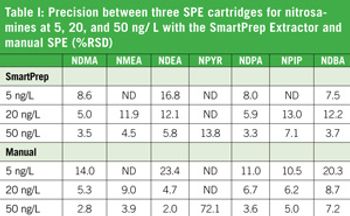Articles by Doug D. Carlton, Jr.

The presence of capable students and researchers, each with a technical niche to offer, prepares us for future opportunities. On top of that structure, we also aim to maintain this mindset for our instrument selection before beginning projects. The installment of core labs at UT Arlington (www.uta.edu/sirt), making a wide range of instruments available to all research groups, has allowed our students to brainstorm about which instrument is the most appropriate for a specific analysis rather than how to make a measurement work with a given instrument.

Disinfection by-products (DBP) are an ever-present nuisance in the efforts to purify drinking water, wastewater, and municipal waters from various sources.

Gas chromatography, ICP-MS, ICP-OES, and other bulk analysis methods applied to groundwater in proximity to unconventional oil and natural gas extraction activities.

Disinfection by-products (DBP) are an ever-present nuisance in the efforts to purify drinking water, wastewater, and municipal waters from various sources. An emerging class of DBP compounds with health effects is nitrosamines which result from chloramination or chlorination if the water is nitrogen-rich. Five of these nitrosamines have been listed on the US EPA’s new Contaminant Candidate List (CCL-3). Of the nitrosamines, the most common and problematic is N-nitrosdimethylamine (NDMA). The maximum admissible levels set by the US EPA are 7 ng/L for NDMA and 2 ng/L for N-nitrosodiethylamine (NDEA).









